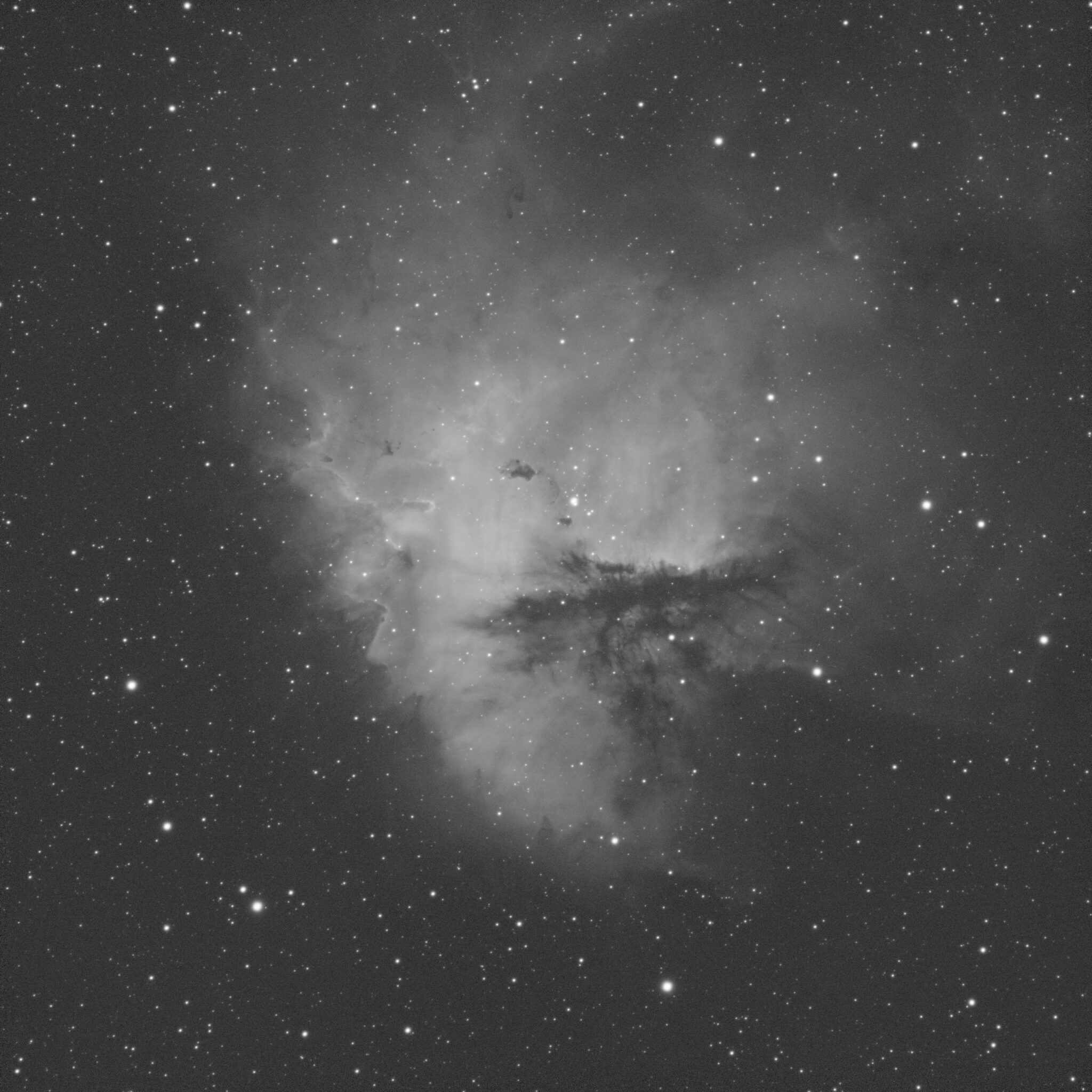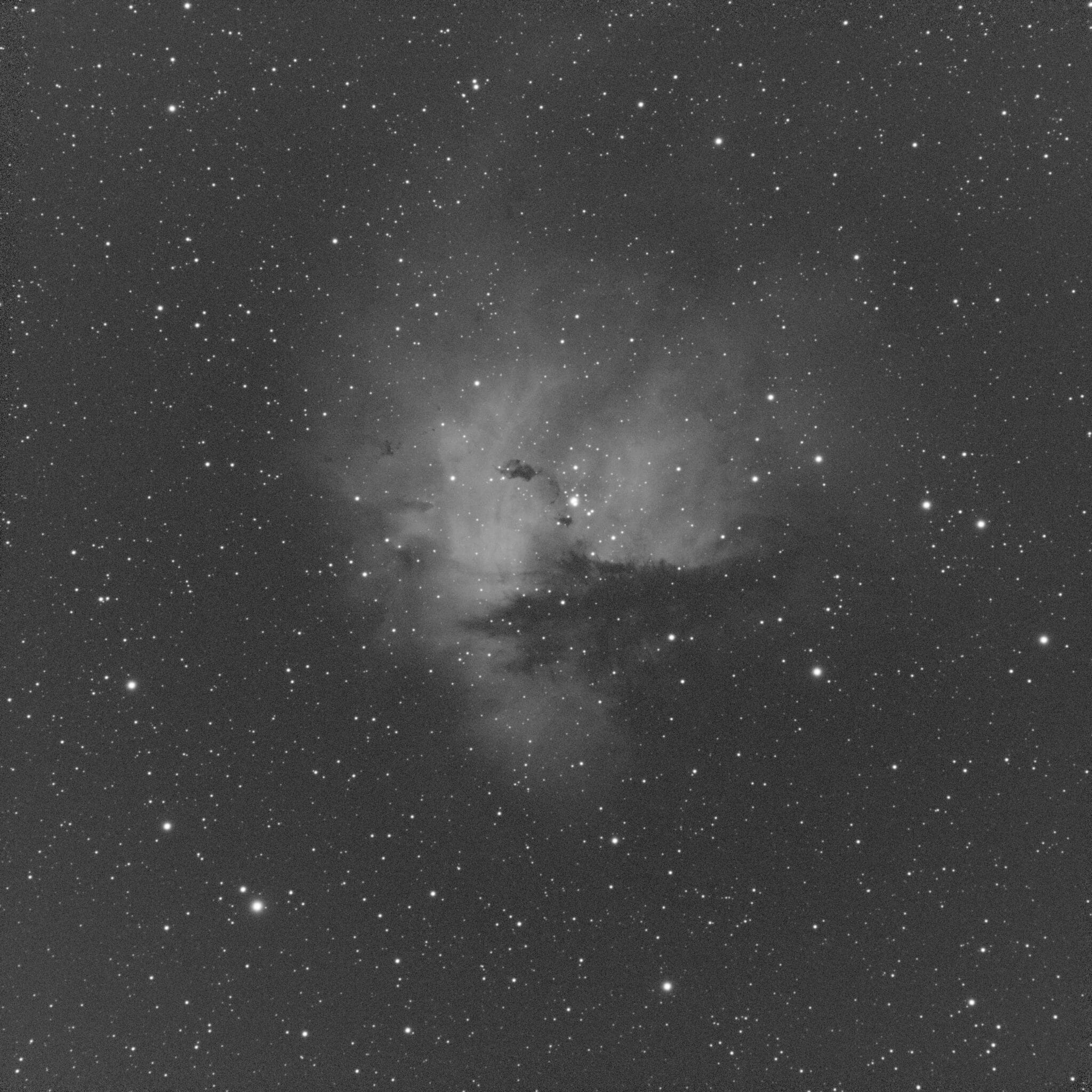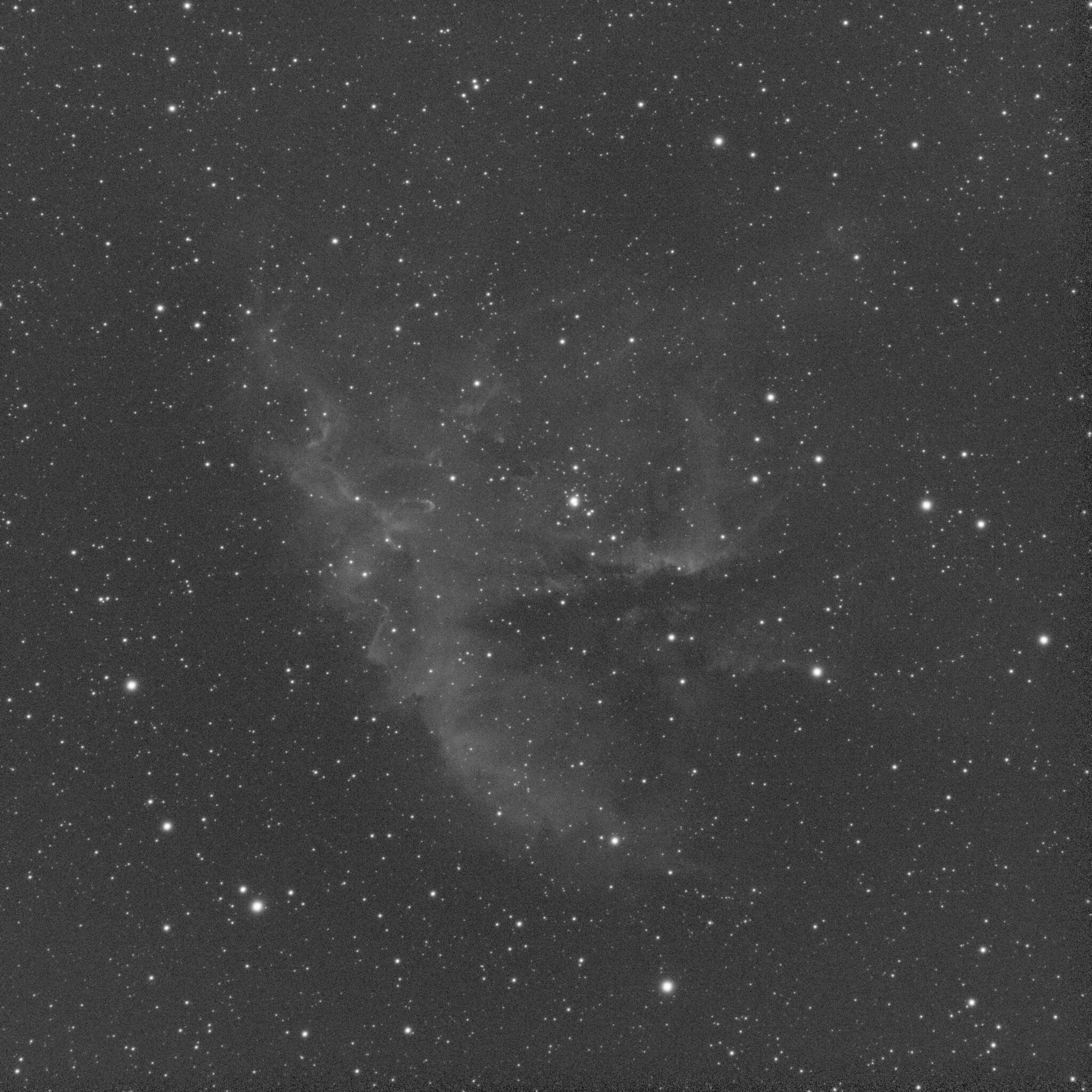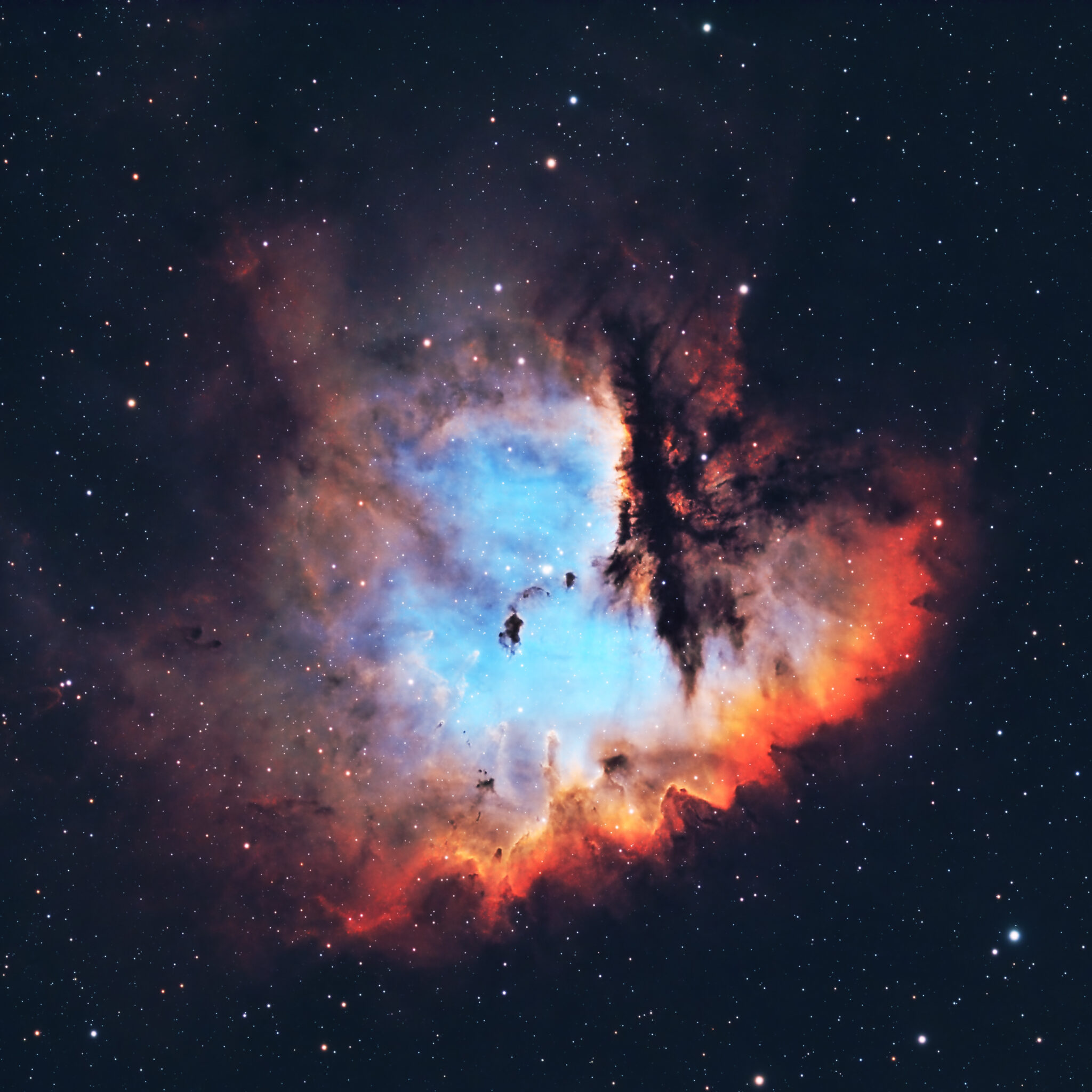The Pacman Nebula probably got its name only in the past 50 years because Pacman didn’t exist 50 years ago! It may have simply been called NGC 281 before 1980 when Pacman took the world by storm. According to Wikipedia, NGC 281 was discovered in August 1883 by Edward Emerson Barnard. He surely didn’t name it the Pacman Nebula in 1883!
This nebula along with the Wizard Nebula (NGC 7380) were 2 nebulas I was looking forward to shooting in the fall when I got my Astro-Tech AT115EDT in March 2023. They were both the perfect size for the AT115EDT with my ASI533MM camera.
My Goal with the Pacman Nebula
My goal was to bring out the Oxygen III (blue color) in this photograph. Doing so required shooting a good amount of Oiii in mono as well as using a dynamic narrowband combination in Pixinsight.
Shooting NGC 281
Shooting NGC 281 was pretty straightforward. I did my normal routine of taking a channel per night (or multiple nights). I got 11 hours of exposure time, with the Oiii being the largest amount of exposure time at 4h 15m. The Ha channel was very close with about 4h and the Sii, as always, lagged way behind with just 2h 21m and finally RGB at 30m. Below are the primary channels so you can see the amount of signal got in each. As always, the Ha channel dominates in signal, which is why it’s used as a luminance channel as well.



Processing NGC 281 in Pixinsight using Dynamic Narrowband Combinations
Bringing out the Oiii in the Pacman Nebula and other narrowband photos is where the importance of the Pixelmath dynamic narrowband combination comes in. It reduces the amount of Ha in a photo (if Ha is too dominant) as opposed to using SHO (Sii, Ha, Oiii) mapped to RGB channel combination. Below is the Pixelmath formula I used for this nebula, courtesy of The Coldest Nights.
R = (Oiii^~Oiii)*Sii + ~(Oiii^~Oiii)*Ha
G = ((Oiii*Ha)^~(Oiii*Ha))*Ha + ~((Oiii*Ha)^~(Oiii*Ha))*Oiii
B = Oiii
I’m “okay” at math, but I do not know what that formula is doing. I tried a few rounds of putting numbers in there using Soulver with Ha being a higher number and Oiii and Sii being slightly lower numbers, but I think there is more than numbers going on here as the green channel always ends up being a larger amount followed by the red channel. That may make sense since in a traditional SHO combination, the red channel would be Sii which is usually the lowest of all signals.
This is not the only Pixelmath formula you can use to combine channels, you can play around with numbers in Pixelmath to get the result you want, such as
((Ha+Oiii) x 2)+(Ha+Sii x 3)
Conclusion
I’m happy with these results. The dynamic narrowband combination surely works. I haven’t been happy with standard SHO combinations in most of my photos and when I discovered this formula; I knew this is how a large part of the astrophotography community produced their photos. This formula worked well with the Pacman Nebula and it will probably work better with 90% of the narrowband combinations I do.
